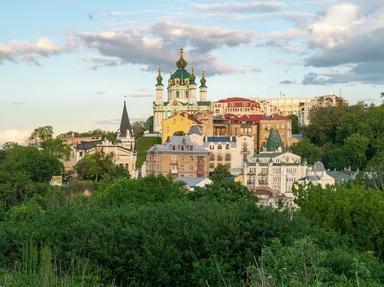Quiz Answer Key and Fun Facts
1. The historic territory of Galicia in Eastern Europe can be described as covering three regions of modern Ukraine. Which of these is *not* one of them?
2. What is the Ukrainian name for the region of Galicia?
3. Which of these birds features on the coat of arms of the region?
4. In what other European country is there a teritorry named Galicia?
5. Galicia has a coastline on the Black Sea.
6. Lviv was the centre of the historical region of Red Ruthenia. After whom did King Danylo name the city?
7. The Ternopil Oblast borders Belarus.
8. After whom was the Ivano-Frankivsk Oblast named?
9. With the decline of the Polish-Lithuanian Commonwealth towards the end of the 18th century, Galicia became a part of which empire?
10. What important economic resource was discovered in Galicia in the mid-19th century?
Source: Author
zorba_scank
This quiz was reviewed by FunTrivia editor
trident before going online.
Any errors found in FunTrivia content are routinely corrected through our feedback system.
